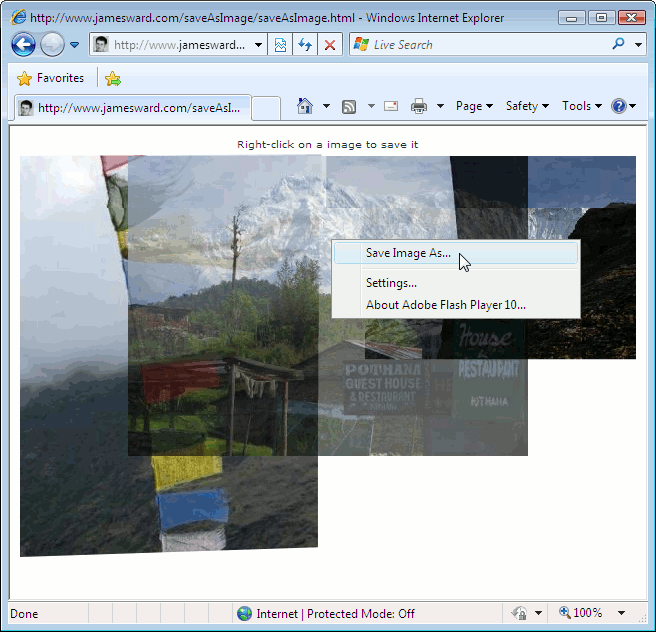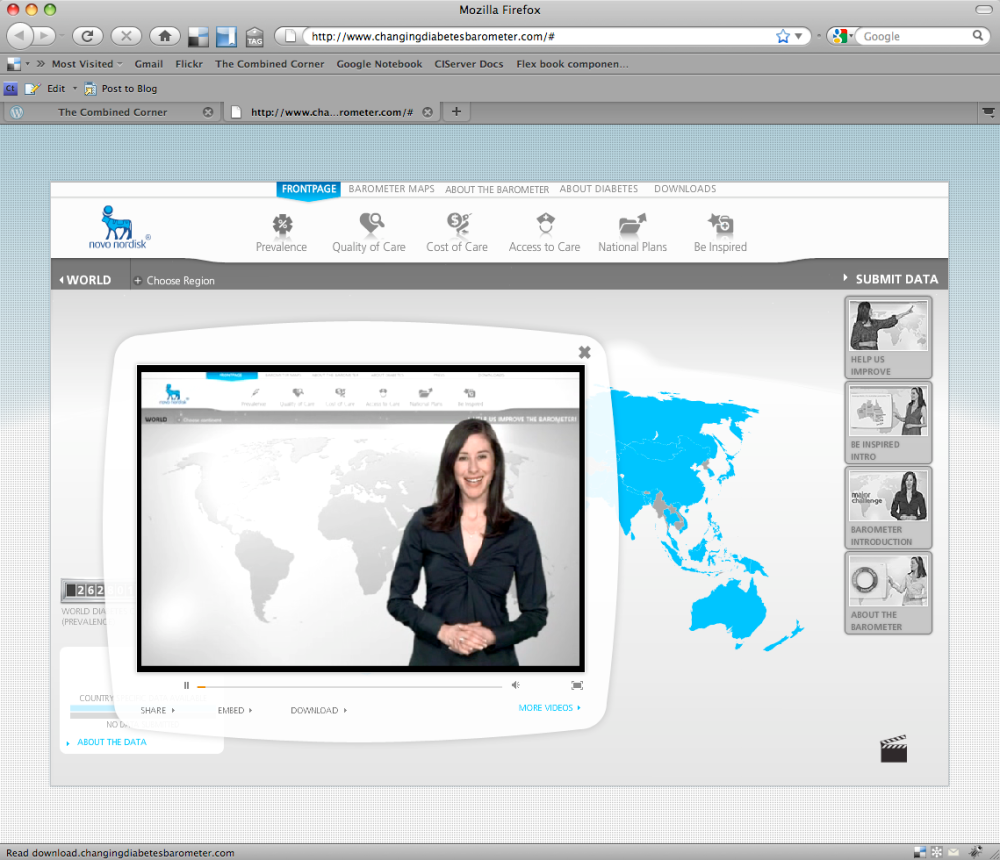James Ward created a clever way of adding a “Save Image As…” feature to an image in Flex.

However clever, in my case I really wanted to avoid having to subclass the Image class specifically, so I created an MXML tag which would take the Image instance as an argument instead.
The source code looks like this…
package org.hello.saveimageas
{
import flash.events.ContextMenuEvent;
import flash.net.FileReference;
import flash.ui.ContextMenu;
import flash.ui.ContextMenuItem;
import flash.utils.ByteArray;
import mx.controls.Image;
import mx.core.IMXMLObject;
public class SaveImageAs implements IMXMLObject
{
private var _target:Image;
private var _label:String = "Save Image As...";
public function SaveImageAs()
{
super();
}
public function initialized(document:Object, id:String):void
{
// empty for now
}
protected function saveImageAs( event:ContextMenuEvent ) : void
{
var tba:ByteArray = new ByteArray();
this.target.content.loaderInfo.bytes.readBytes(tba, 0, ( this.target.content.loaderInfo.bytes.length - 17 ) );
tba.position = 49;
var ba:ByteArray = new ByteArray();
while (tba.bytesAvailable)
{
ba.writeByte(tba.readUnsignedByte());
}
var fr:FileReference = new FileReference();
fr.save( ba, this.target.source.toString() );
}
[Bindable]
public function get target() : Image
{
return this._target;
}
public function set target( value:Image ) : void
{
this._target = value;
if( this.target != null )
{
var targetContextMenu:ContextMenu = this.target.contextMenu != null ? this.target.contextMenu : new ContextMenu();
targetContextMenu.hideBuiltInItems();
var item:ContextMenuItem = new ContextMenuItem( this.label );
targetContextMenu.customItems.push(item);
item.addEventListener( ContextMenuEvent.MENU_ITEM_SELECT, saveImageAs );
this.target.contextMenu = targetContextMenu;
}
}
[Bindable]
public function get label() : String
{
return this._label;
}
public function set label( value:String ) : void
{
this._label = value;
}
}
}
A basic usage of it could look something like this…
<s>
</s>
Be sure to check out the original implementation by James Ward… it might suite your needs better…
http://www.jamesward.com/blog/2009/07/09/flex-example-right-click-save-image-as/
Thomas Burleson has already cornered this approach – as “Flex Behavior Injection”… check it out…
http://www.gridlinked.info/flex-behavior-injection/
The above modification to James Wards’ original contribution has been added to the “unsponsored” framework from where you can obtain it via SVN…
http://code.google.com/p/unsponsored/




